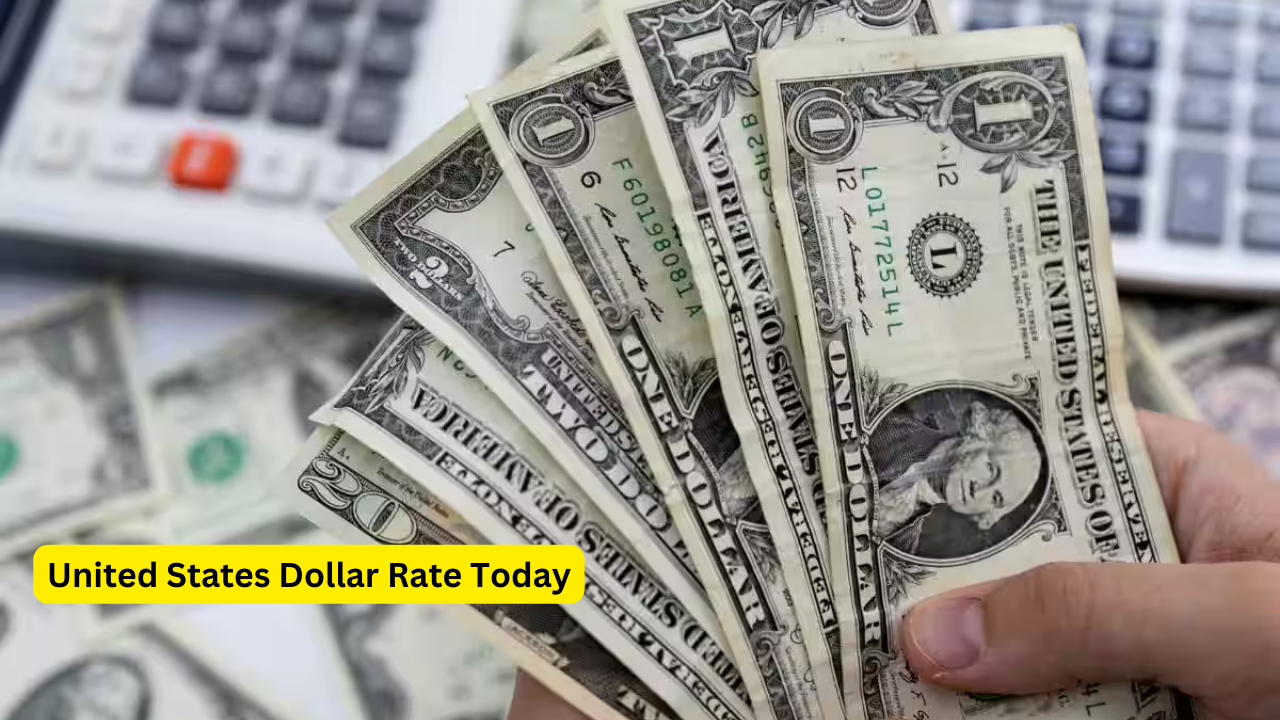The United States dollar (USD) is one of the most influential currencies in the global economy. Known as the world’s primary reserve currency, it plays a pivotal role in international trade, finance, and investment. The United States dollar rate today is a subject of significant interest to investors, businesses, and policymakers worldwide. This article delves into the factors that influence the USD exchange rate, its current trends, and the broader implications for the global economy.
What Determines the United States Dollar Rate?
The exchange rate of the USD against other currencies is influenced by a variety of factors, including economic indicators, geopolitical events, market sentiment, and monetary policies. Understanding these determinants is crucial for anyone looking to comprehend the daily fluctuations in the USD rate.
Economic Indicators
Economic indicators provide insights into the health of the US economy and can significantly impact the value of the dollar. Key indicators include:
- Gross Domestic Product (GDP): A strong GDP growth rate indicates a robust economy, often leading to a stronger dollar.
- Inflation Rates: Higher inflation can erode the purchasing power of the dollar, leading to a weaker exchange rate.
- Employment Data: Employment levels and job growth are crucial indicators of economic strength. Higher employment rates generally support a stronger dollar.
- Consumer Confidence: High consumer confidence can boost spending and economic growth, positively affecting the dollar’s value.
Monetary Policy
The Federal Reserve (Fed) plays a critical role in determining the value of the USD through its monetary policy decisions. Key aspects include:
- Interest Rates: Higher interest rates attract foreign investment, leading to an appreciation of the dollar. Conversely, lower interest rates can weaken the dollar.
- Quantitative Easing (QE): When the Fed engages in QE, it increases the money supply, which can devalue the dollar.
- Forward Guidance: Statements and projections from the Fed regarding future policy actions can influence market expectations and impact the dollar’s exchange rate.
Geopolitical Events
Geopolitical stability and international relations significantly affect the USD rate. Key events to watch include:
- Trade Agreements: Bilateral and multilateral trade agreements can enhance or undermine the dollar’s value depending on their terms.
- Political Stability: Political uncertainty or instability can lead to market volatility, impacting the dollar’s exchange rate.
- Global Conflicts: Geopolitical tensions and conflicts can lead to a flight to safety, often resulting in a stronger dollar as investors seek safe-haven assets.
Market Sentiment
Market sentiment, driven by investor perceptions and speculative activities, can lead to short-term fluctuations in the USD rate. Factors influencing sentiment include:
- Risk Appetite: In times of economic uncertainty, investors tend to move towards safe-haven currencies like the USD, strengthening its value.
- Speculative Trading: Traders and investors speculating on future movements of the dollar can cause volatility in its exchange rate.
Current Trends in the United States Dollar Rate
As of today, the United States dollar is experiencing notable movements against major currencies. Several factors are contributing to these trends:
Post-Pandemic Economic Recovery
The global economy is gradually recovering from the impacts of the COVID-19 pandemic. The US has implemented substantial fiscal stimulus measures and vaccination efforts, supporting economic growth. This recovery has contributed to a stronger dollar in recent months.
Inflation Concerns
Rising inflation rates in the US have raised concerns among investors and policymakers. The Fed’s response to inflation, including potential interest rate hikes, is closely monitored and has significant implications for the USD rate.
Federal Reserve Policy
The Fed’s monetary policy stance continues to influence the dollar. Recent discussions around tapering asset purchases and raising interest rates to combat inflation have supported the dollar’s strength. However, market reactions to Fed announcements can lead to volatility.
Global Supply Chain Issues
Ongoing supply chain disruptions have impacted global trade and economic growth. These issues affect currency markets as countries with stronger supply chains and economic resilience, like the US, can see their currencies appreciate.
Geopolitical Developments
Geopolitical tensions, particularly those involving major economies like China and Russia, can lead to fluctuations in the USD rate. Trade policies, sanctions, and diplomatic relations all play a role in shaping the dollar’s value.
Implications of the United States Dollar Rate Today
Global Trade and Investment
The USD exchange rate has significant implications for global trade and investment. A stronger dollar makes US exports more expensive and imports cheaper, impacting trade balances. For multinational companies, currency fluctuations can affect revenue and profitability.
Emerging Markets
Many emerging markets have debts denominated in USD. A stronger dollar can increase the burden of these debts, leading to economic challenges. Conversely, a weaker dollar can provide relief and support economic growth in these regions.
Commodity Prices
Commodities like oil, gold, and agricultural products are often priced in USD. Changes in the dollar’s value can influence commodity prices, affecting global markets and economies dependent on commodity exports.
Tourism and Travel
The USD rate impacts tourism and travel industries. A stronger dollar makes travel to the US more expensive for foreign tourists, potentially reducing tourist inflows. Conversely, it makes travel abroad cheaper for Americans, boosting outbound tourism.
Conclusion: Navigating the Fluctuations
Understanding the United States dollar rate today involves analyzing a complex interplay of economic indicators, monetary policies, geopolitical events, and market sentiment. For investors, businesses, and policymakers, staying informed about these factors is crucial for making strategic decisions. As the global economy continues to evolve, the USD rate will remain a key barometer of financial health and stability.
